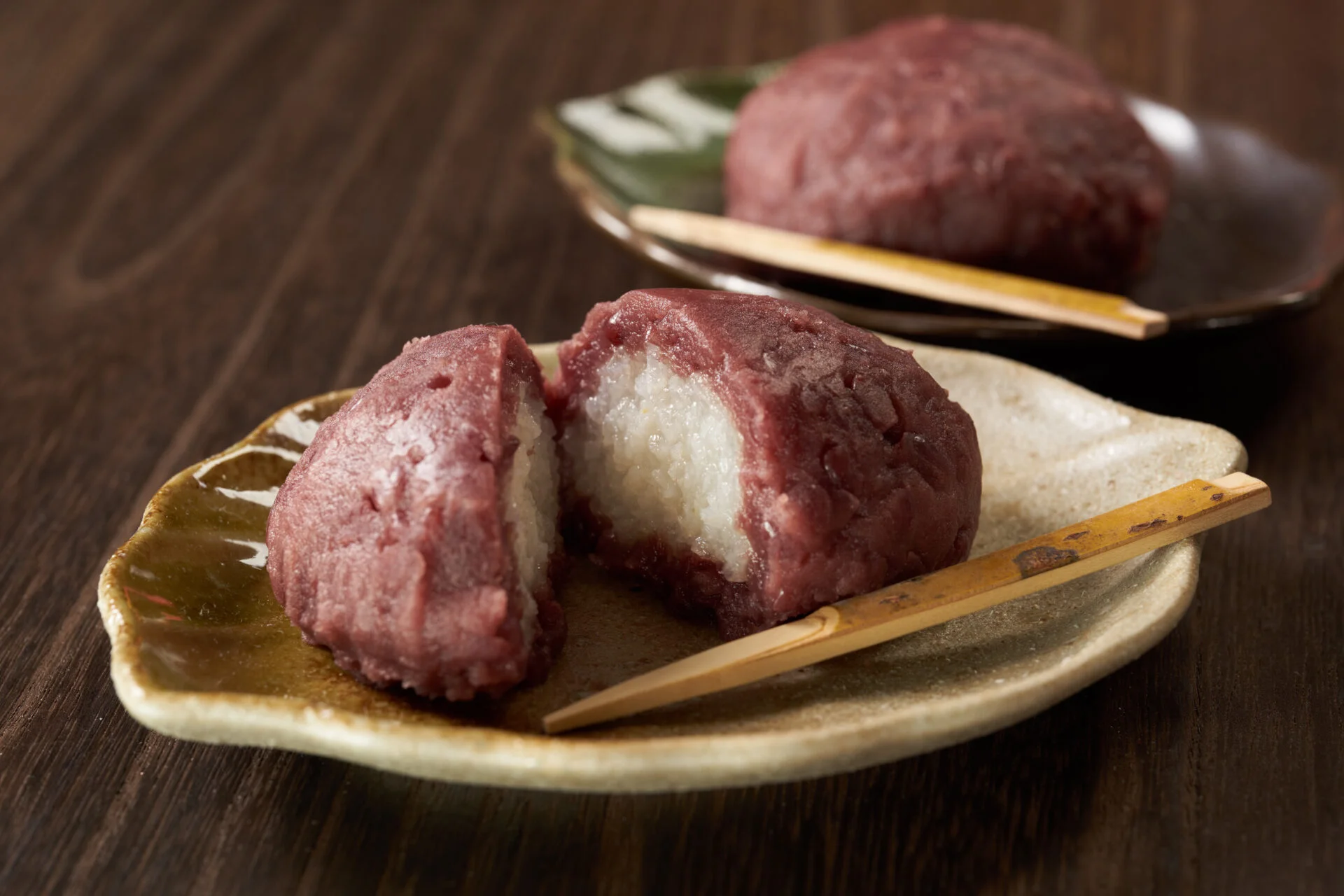Ohagi and Bota mochi: Japan’s Seasonal Sweet Treasures in Wagashi
In the world of Japanese confectionery, Wagashi, there are many delightful creations that express the beauty and flavors of the four seasons. Among these, “Ohagi” and “Bota mochi” hold a special place in people’s hearts. While these two sweets may appear identical at first glance, they harbor a fascinating history and cultural significance. Let’s delve into the captivating world of these traditional wagashi.
The Origins of Ohagi: A Sweet Loved Since Medieval Times
The origins of Ohagi can be traced back to medieval Japan. While the exact time of its inception remains unclear, references to a food believed to be the prototype of Ohagi appear in literature from the Kamakura period.
Works such as “Uji Shūi Monogatari” (circa 1221) and “Tsurezuregusa” (circa 1331) mention a food called “kaimochii,” which is thought to be the predecessor of Ohagi. However, this early version likely differed significantly from the Ohagi we know today.
During the Kamakura period, sugar was an extremely precious commodity. Therefore, it’s believed that the Ohagi of that time didn’t contain sugar. Instead, it likely used salty bean paste (shio-an) as a filling.
While sugar was introduced to Japan from China during the Nara period, it was long considered a valuable medicine. It wasn’t until the subsequent Muromachi period that sugar began to be used in confectionery, and even then, only in high-end sweets.
Ohagi began to take its current form and become widely popular among common people during the Edo period. In the late 1600s, domestic sugar production began, making it more accessible to the general public. This allowed Ohagi to become a part of people’s everyday lives.
Ohagi and Bota mochi: The Difference in Names and Seasonal Significance
Ohagi and Bota mochi actually refer to the same sweet. The distinction in names reflects the Japanese sensitivity to seasons.
Those made from spring to summer are called “Bota mochi,” while those made from autumn to winter are called “Ohagi.” The names are derived from seasonal flowers. “Bota mochi” is named after the peony (botan) that blooms in spring, while “Ohagi” is named after the bush clover (hagi) that blooms in autumn.
This naming convention beautifully expresses the Japanese appreciation for seasonal changes and showcases the depth of wagashi culture.
The Structure and Production of Ohagi: The Secret Behind Its Simple Beauty and Nutritional Value
The basic structure of Ohagi is remarkably simple. It consists of steamed and mashed mochi rice, covered with various toppings such as sweet red bean paste, black sesame, or kinako (roasted soybean flour). This humble creation encapsulates Japanese aesthetics and wisdom.
The main ingredients are:
- Mochi rice
- Azuki beans (for anko)
- Toppings such as kinako, black sesame, or zunda (mashed edamame)
- Sugar
Ohagi is known for its well-balanced nutritional profile compared to other Japanese sweets. Here’s a comparison table of the nutritional values of Ohagi and other wagashi:
| Type | Calories | Carbohydrates |
|---|---|---|
| Kinako Ohagi | 231kcal | 48.9g |
| Anko Ohagi | 229kcal | 49.1g |
| Monaka | 285kcal | 62.5g |
| Yokan | 296kcal | 66.9g |
| Daifuku Mochi | 235kcal | 50.3g |
Source: Standard Tables of Food Composition in Japan – 2015 (7th Revision) | Ministry of Education, Culture, Sports, Science and Technology
As this table shows, Ohagi has relatively lower calories and carbohydrates compared to other Japanese sweets. This suggests that Ohagi has functioned not just as a sweet treat, but also as a part of a nutritionally balanced diet.
Varieties of Ohagi: Diverse Flavors and Regional Characteristics
One of the charms of Ohagi lies in its diversity. Besides the basic anko and kinako versions, there are various other types:
- Goma Ohagi: Covered with black sesame seeds
- Zunda Ohagi: Covered with mashed edamame (a specialty of the Tohoku region)
- Yomogi Ohagi: Mugwort mixed into the mochi
- Kurumi Ohagi: Covered with crushed walnuts
There are also regional specialties. For example, Kyoto is famous for its “Miso Ohagi,” which uses white miso. In this way, Ohagi reflects the local specialties and food cultures of different regions in Japan.

Ohagi in Modern Times: Tradition, Innovation, and Nutritional Focus
In modern times, we see new approaches to Ohagi. For example, versions using matcha or chocolate have appeared, catering to the tastes of younger generations.
Moreover, there’s a renewed focus on the nutritional value of Ohagi, in line with growing health consciousness. There are even reports of athletes favoring Ohagi as an ideal meal. This is due to its balanced content of calories, carbohydrates, and high-quality proteins.
To illustrate this point, consider the following quote:
“When I crave something sweet, I choose Japanese sweets without hesitation, especially Ohagi. I can even say that I’m ‘nourishing myself and building my body with Ohagi.’ Ohagi is very low in fat, high in protein, and provides a lasting feeling of fullness. In other words, it can be considered a food for athletes.”
source : ToyoKeizaiOnline
This perspective highlights how traditional Japanese sweets like Ohagi are being rediscovered for their nutritional benefits in the modern context. The combination of natural ingredients, balanced nutrition, and satisfying taste makes Ohagi not just a treat, but a functional food that can support an active lifestyle.
Conclusion: The Enduring Charm of Ohagi, a Taste of Japan’s Culture
Ohagi and Bota mochi have been beloved throughout Japan’s long history as sweets that symbolize the country’s four seasons and culture. Their simple appearance encapsulates Japanese sensitivity to seasons, aesthetics, and the wisdom of our ancestors.
Even in modern times, Ohagi continues to evolve, maintaining tradition while adding new appeals. The next time you enjoy Ohagi, take a moment to appreciate the history and culture encapsulated in each bite. You might just discover a new aspect of its charm.
